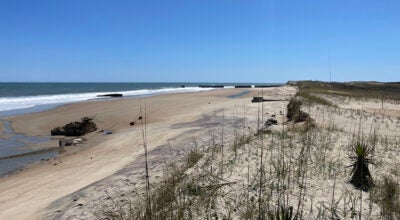Hurricane season ends
Published 5:59 am Wednesday, December 4, 2019
On Nov. 30, the 2019 Atlantic hurricane season ended.
The season produced 18 named storms, including six hurricanes of which three were “major” (category 3, 4 or 5). NOAA’s outlook called for 10-17 named storms, 5-9 hurricanes and 2-4 major hurricanes.
This year marks the fourth consecutive above-normal Atlantic hurricane season. The only other period on record that produced four consecutive above-normal seasons was 1998-2001. Also this year, five tropical cyclones formed in the Gulf of Mexico, which ties a record with 2003 and 1957 for the most storms to form in that region. Of those, three — Barry, Imelda and Nestor — made landfall in the U.S., reports NOAA.
The 18 named storms that formed are Andrea, Barry, Chantal, Dorian, Erin, Fernand, Gabrielle, Humberto, Imelda, Jerry, Karen, Lorenzo, Melissa, Nestor, Olga, Pablo, Rebekah and Sebastien.
The three major hurricanes this season were Dorian, Humberto and Lorenzo.
Hurricane Dorian is tied with three other hurricanes — the 1935 Labor Day Hurricane, 1988’s Hurricane Gilbert and 2005’s Hurricane Wilma — as the second strongest hurricane on record in the Atlantic basin in terms of wind (185 mph). In all, four storms made landfall in the U.S. during the 2019 season: Barry, Dorian, Imelda and Nestor.
An average season has 12 named storms, six hurricanes and three major hurricanes.
During the 2019 season, NOAA’s hurricane hunter aircraft and crews flew 57 missions over 430 hours, which along with the 53rd Weather Reconnaissance Squadron of the Air Force Reserve, provided critical data that aided in storm forecasting and research.
In addition, NOAA’s King Air crew collected more than 26,939 aerial images covering more than 4,300 square miles of areas affected by Hurricane Dorian, including shoreline, ports and impacted inland areas of several Bahamian Islands to aid in emergency response.
NOAA and NOAA-supported researchers from the U.S. and Caribbean deployed 30 autonomous ocean glider missions in the Atlantic this season, which provided more than 75,000 observations of ocean temperature and salinity to operational hurricane forecast models. Ocean temperature and salinity data provide important clues about hurricane intensification.
READ ABOUT MORE NEWS AND EVENTS HERE.





